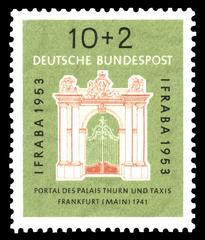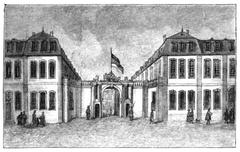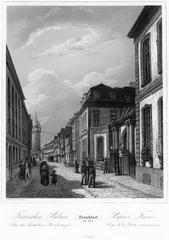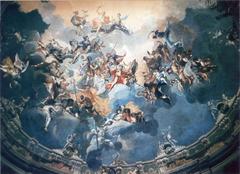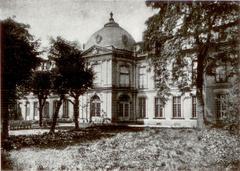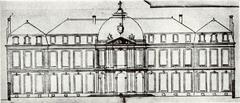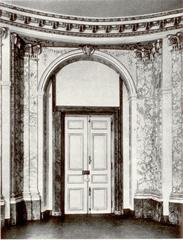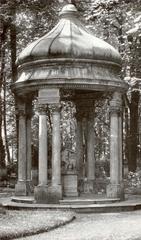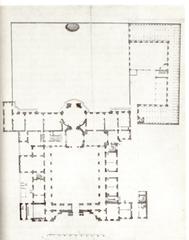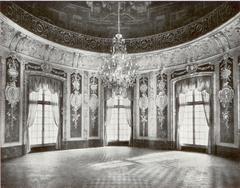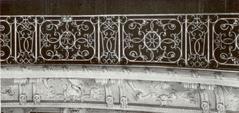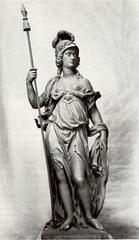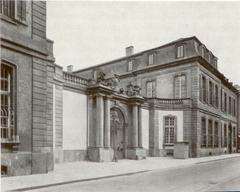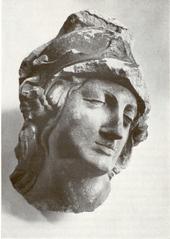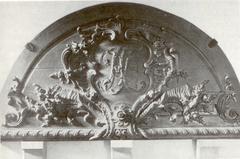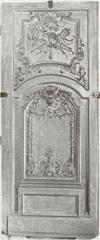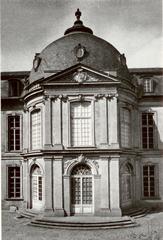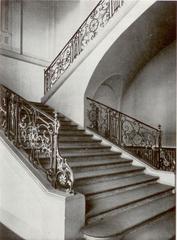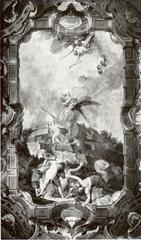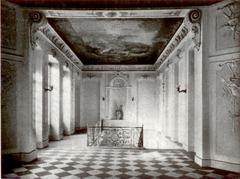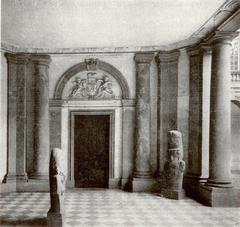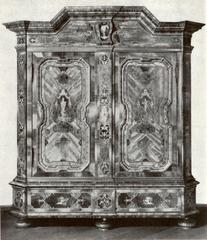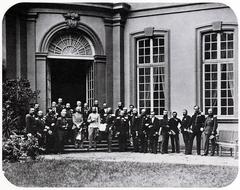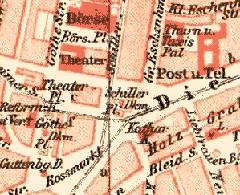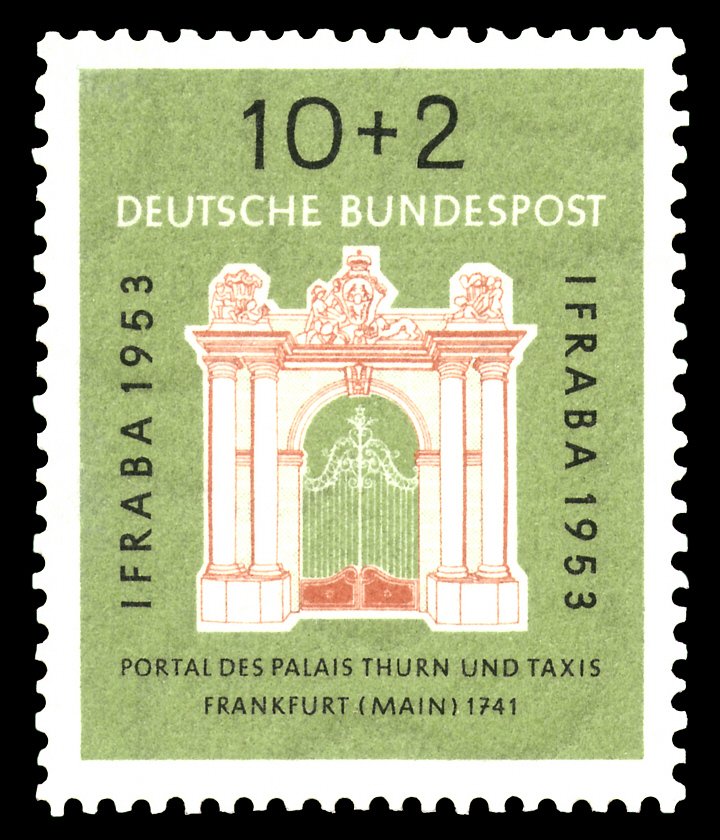
Palais Thurn und Taxis Frankfurt: Visiting Hours, Tickets, and Historical Sites Guide
Date: 15/06/2025
Introduction
Situated in the heart of Frankfurt’s vibrant Innenstadt, Palais Thurn und Taxis is a striking symbol of the city’s Baroque past and its dynamic present. Originally constructed between 1731 and 1739 for Prince Anselm Franz von Thurn und Taxis and designed by the distinguished French architect Robert de Cotte, the palace played a significant role in European history as the headquarters of the Imperial Post and a hub for political and cultural life. Despite suffering extensive damage during World War II and subsequent demolition, the palace was meticulously reconstructed from 2004 to 2010, forming an essential part of the modern Palais Quartier development. Today, it seamlessly blends historic elegance with contemporary amenities, offering visitors a unique experience that intertwines tradition, architecture, and urban life. This guide covers everything you need to know for your visit: opening hours, ticketing, accessibility, historical highlights, travel tips, and nearby attractions. (planergo.com, timeout.com, palaisfrankfurt.de)
Contents
- Discovering the History of Palais Thurn und Taxis
- Origins and Baroque Construction
- The Thurn und Taxis Family & the Imperial Post
- Political and Cultural Significance
- Destruction, Demolition, and Modern Reconstruction
- Architectural Features
- Visiting Information
- Hours, Tickets, and Accessibility
- Guided Tours and Events
- Travel Tips
- Nearby Attractions
- Frequently Asked Questions (FAQ)
- Practical Visitor Tips
- Summary and Final Recommendations
- Official Sources
Discovering the History of Palais Thurn und Taxis
Origins and Baroque Construction
Constructed between 1731 and 1739 under Prince Anselm Franz von Thurn und Taxis, the palace was conceived as an architectural showpiece of Baroque grandeur for Frankfurt. Robert de Cotte’s design introduced French Baroque influences, including symmetrical façades, grand staircases, and opulent decorative elements, setting the palace apart as a key landmark in the Innenstadt. (planergo.com)
The Thurn und Taxis Family & the Imperial Post
The Thurn und Taxis family’s influence extended across Europe as Imperial Postmasters General, managing the continent’s most advanced communication network. In 1748, the palace became the headquarters of this network, symbolizing the family’s central role in connecting regions and nations. (trek.zone)
Political and Cultural Significance
From 1805 to 1813, the palace was the residence of Karl Theodor von Dalberg, Primate and Grand Duke of Frankfurt. It later hosted the Bundestag of the German Confederation (1816–1866), cementing its reputation as a focal point for German political life. Throughout the 19th and early 20th centuries, the building’s purpose evolved—from aristocratic residence to Museum of Ethnology—mirroring Frankfurt’s transformation. (palaisfrankfurt.de)
Destruction, Demolition, and Modern Reconstruction
The palace suffered severe damage during World War II. By 1951, it was demolished to make way for new infrastructure. However, between 2004 and 2010, the Palais was reconstructed as part of the Palais Quartier, with careful attention to historical accuracy. The new development integrates the palace’s grand Baroque façade with modern interiors, retail, and event spaces, reflecting Frankfurt’s commitment to preserving its heritage while embracing the future. (timeout.com)
Architectural Features
The reconstructed palace showcases its iconic Baroque façade, elegant cour d’honneur, and key interior spaces such as the Sala Grande and Bel Etage. While much of the original interior was lost or relocated, the restoration captures the spirit of its 18th-century origins, blending historical elements with contemporary design. (palaisfrankfurt.de)
Visiting Information
Hours
- Public Areas & Courtyard: Open daily from 8:00 AM to 10:00 PM.
- Interior Access: Restricted to event attendees and special tours. Hours may vary; check the official website for current information.
Tickets
- Public Spaces: Free entry.
- Special Events & Guided Tours: Fees apply, typically ranging from €5 to €12, with discounts for students, seniors, and groups. Booking in advance is recommended. (palaisfrankfurt.de)
Accessibility
- Full wheelchair access, including ramps and elevators.
- Accessible restrooms available.
- Assistance for visitors with special needs can be arranged upon request.
Guided Tours and Events
- Regular guided tours (advance booking required) explore the palace’s history and architecture.
- The palace hosts concerts, cultural festivals, and private events throughout the year.
- The Christmas Market at Thurn-und-Taxis-Platz is a seasonal highlight, offering a cozy, festive atmosphere. (christmasmarketguides.com)
Travel Tips
- The palace is easily accessible via public transport: Hauptwache and Konstablerwache stations (U-Bahn/S-Bahn) are just a short walk away.
- Parking is available at the integrated Parkhaus MyZeil / PalaisQuartier (Große Eschenheimerstraße 10-14).
- The best times to visit are weekdays and mornings to avoid crowds, especially during special events.
Nearby Attractions
- MyZeil Shopping Mall: Modern architecture and over 60 shops/restaurants.
- Zeil Shopping Street: Frankfurt’s main pedestrian retail avenue.
- Goethestraße: Upscale shopping with luxury boutiques.
- Freßgass: Gourmet food and cafés.
- Römer & St. Paul’s Church: Medieval city hall and historic church, both within walking distance.
- Main Tower & Palmengarten: Panoramic city views and botanical gardens nearby.
Frequently Asked Questions (FAQ)
Q: What are the Palais Thurn und Taxis visiting hours?
A: Public areas are open from 8:00 AM to 10:00 PM daily; interior access is event-based. Always check the official website for up-to-date hours.
Q: Is there an entrance fee?
A: Public outdoor spaces are free; tickets are required for special exhibitions, events, or guided tours.
Q: Is the palace wheelchair accessible?
A: Yes, the palace and PalaisQuartier are fully accessible.
Q: Can I take photos at Palais Thurn und Taxis?
A: Yes, photography is allowed in public areas; some restrictions may apply during private events.
Q: Are guided tours available?
A: Yes, but they must be booked in advance. Check palaisfrankfurt.de for details.
Practical Visitor Tips
- Arrive by public transport for convenience; parking is also available.
- Consider visiting during spring or autumn for pleasant weather and fewer crowds.
- Explore the surrounding PalaisQuartier for shopping, dining, and entertainment.
- Check local event listings for public events or special exhibitions at the palace.
Summary and Final Recommendations
Palais Thurn und Taxis offers a window into Frankfurt’s aristocratic heritage and its ongoing urban evolution. From its origins as a Baroque palace of European importance to its destruction and eventual rebirth within a modern development, the site stands as a testament to resilience and continuity. Today, it serves as a multifunctional venue for culture, events, and civic engagement, all within a prime downtown location. Whether you are a history enthusiast, architecture lover, or traveler seeking a unique urban experience, Palais Thurn und Taxis is an essential stop on any Frankfurt itinerary. For the best experience, plan ahead by checking for guided tours and special events, and download the Audiala app for updates and exclusive content. (palaisfrankfurt.de, planergo.com, timeout.com)
Official Sources and Further Information
- Palais Thurn und Taxis on Planergo
- Timeout Frankfurt: Most Beautiful Buildings
- Palais Frankfurt Official Site
- Dein Rhein Main: Visiting Guide
- Frankfurt Christmas Markets Guide
